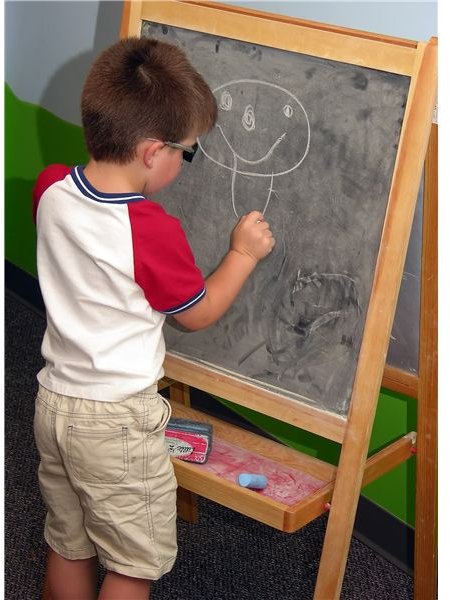Guide to Creating a Preschool Assessment Portfolio
What’s in a Portfolio?
A preschool assessment portfolio contains all the work a child has completed over a pre-determined amount of time. The portfolio may contain artwork the child has created, pictures taken of the child during school hours, and anecdotal notes recorded by the teacher.
Four key areas should be documented in a preschool portfolio. These include fine and gross motor skills, social and emotional development, cognitive development, and language and literacy skills. Keen observation and gathering of work samples will allow the teacher to develop the portfolio into a highly useful assessment tool.
Organization
The easiest way to organize a preschool assessment portfolio is by sorting work into the four key developmental areas. By organizing the portfolio in this way, it will be easy to spot the areas in which the child is excelling, as well as they areas where the child may be encountering difficulties or need extra attention.
Motor Skills: Often broken down into two groups, gross motor and fine motor development. A rubric for motor skills should include the skill being observed, the quality of performance, and the frequency at which it is performed. ALso included in this section of the portfolio should be photos of the child performing basic motor functions as well as teacher observations. Observations should be complete with dates as well as the child’s age at the time of observation in years and months. When assessing fine motor skills, be sure to include examples of the child’s writing and artwork.
Social and Emotional Development: Examples to be included in the portfolio include teacher observations of social skills as well as documented assessments regarding typical preschool milestones. Document the milestone, the age of the child in years and months, and an example that led you to the assessment that the milestone had been reached.
Cognitive Skills: Cognitive skills are often harder to document through pictures. In this case, be sure to include examples of the types of cognitive activities the child enjoys participating in, such as pattern and sorting activities, or block building. Observe and document the milestones associated with these activities, as well as the age of the child in years and months.
Language and Literacy Development: Observe and document the child’s understanding of stories, as well as their receptive and spoken language development. Measure these milestones using your knowledge of child development, and document your observations. If possible, make a sound recording of the child’s voice as further documentation of language development to be included in the preschool assessment portfolio.
The Importance of Observation and Documentation
A lot has been said about observing and documenting children’s behaviors when compiling a portfolio. The most important tool in a teacher’s pocket is a keen sense of observation and her ability to properly document those observations. Here are some things to keep in mind when observing preschool children:
- It is important to leave teacher bias aside when observing children. Do not assume a child is happy/sad/angry. Document facial expressions and body posture rather than assuming emotion.
- Observations do not have to be fully documented immediately. Instead, keep a pen and some scraps of paper in your pocket during the day. Jot down notes of behaviors and activities you observe during the school day. When the children are napping or gone for the day, go back over your notes and write the longer version of the observation.
- Always be sure to document the child’s age in years and months when making an observation.
- Rewrite observation notes to include in a preschool assessment portfolio. Always keep copies of observations for yourself.
Creating an individual preschool assessment portfolio for each child in your classroom can be a lot of work, but it an also be a lot of fun. It is your chance to share your classroom experiences with parents.
References
Author’s personal classroom experiences.
“The Art of Awareness: How Observation Can Transform Your Teaching”; Deb Curtis and Margie Carter; 2000
